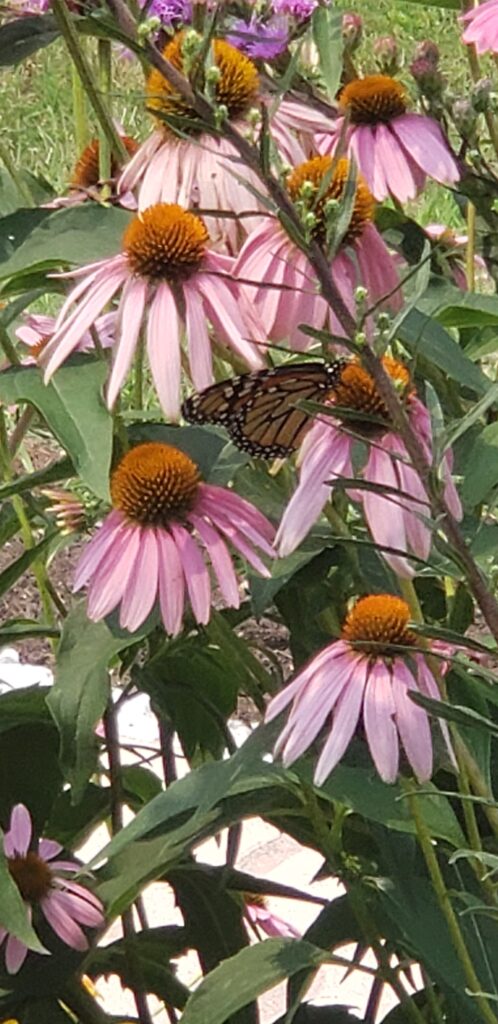
- Choose a sunny, sheltered location with average soil for a butterfly garden. The garden will feed butterflies but also other important pollinators, such as moths, wasps, bees, and beetles.
- Plant a mix of host plants (where eggs are laid and that caterpillars feed on) and nectar plants (that adult butterflies and moths feed on).
- Choose single flowered plants, not doubles that are hard for pollinators to access. Liatris (gayfeather) attracts the most bees, butterflies, and goldfinches at my house. Additional flowers are coneflower and perennial sunflowers, just to name a few. Search online for the right plants for your location.
- Do not use pesticides or BT (Bacillus thurigiensis, used for controlling Japanese beetle grubs) on plants or your lawn; these are toxic to insects, including butterflies and caterpillars.

